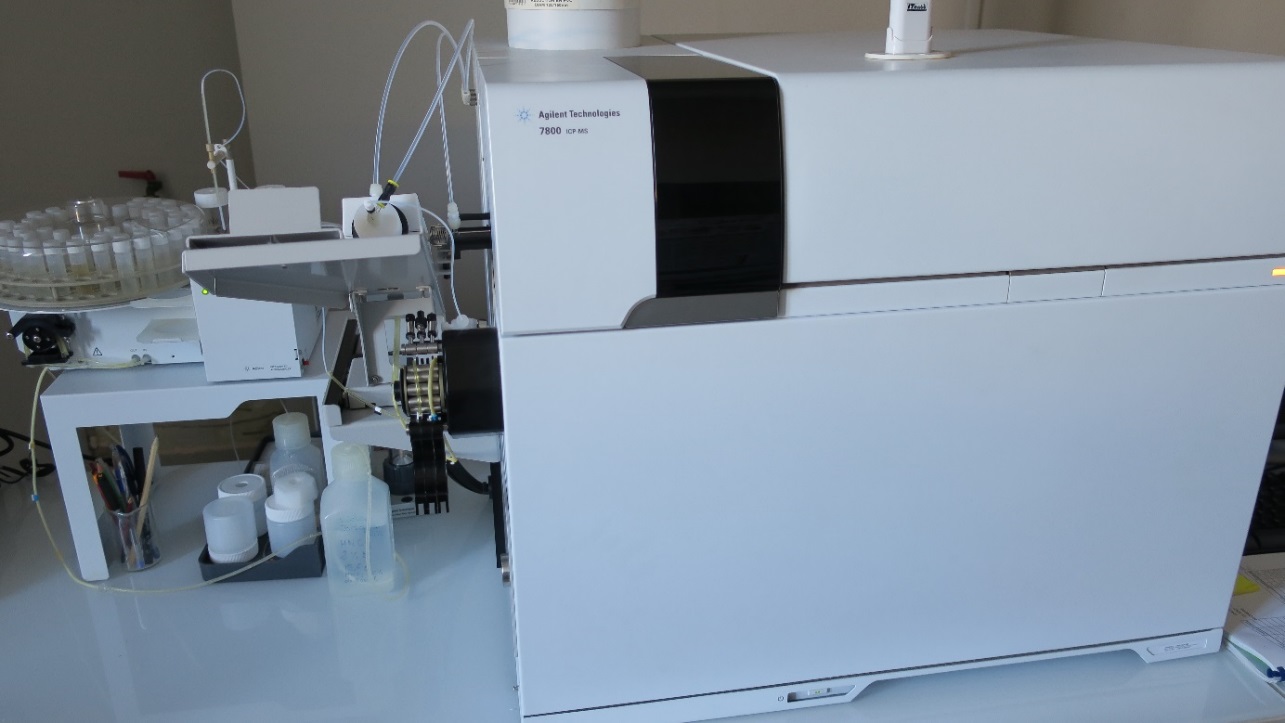Working principle / output
The ICP-MS (Inductively Coupled Plasma – Mass Spectrometry) is able to detect a wide range of chemical elements at concentrations as low as ten ppt (part per trillion) on non-interfered low-background isotopes. This technique aims to separate the ions generated by an argon plasma according to their mass to charge ratio. It allows the analysis of solids (after dissolution or alkaline fusion) and liquids (after dilution) with high accuracy, sensitivity and speed.
 |
Key features
- Model: Agilent Technologies 7800
- Determination of more than 100 elements (majors and traces elements; except C, H, N and O)
- Detection limit: 10 ppt (ng/L) -1 ppb (µg/L)
- HMI (High Matrix Interface) kit to routinely measure samples containing up to 2% (20 g/L) total dissolved solids
- CRC (Collision Reaction Cells) using He to eliminate polyatomic interferences, and thus increase the robustness and quality of measurements
- Detection on 10 orders of magnitude dynamic range (from ppt to percent-level concentrations) for fast analysis of large sample series
- Automatic sample changer for 89 samples
Contact
Feel free to contact Steve PEUBLE for further information (click to send Email).